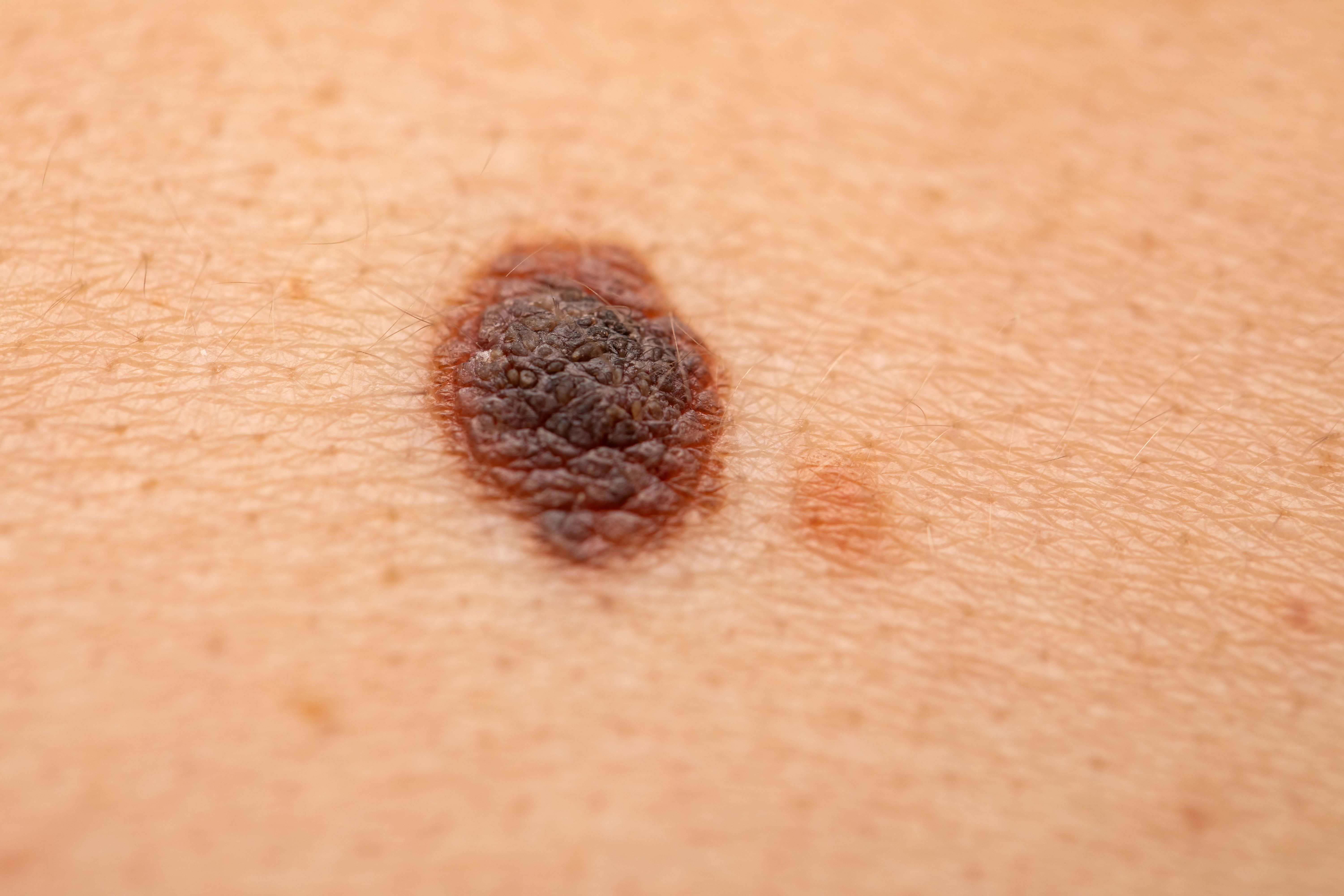- General Dermatology
- Eczema
- Alopecia
- Aesthetics
- Vitiligo
- COVID-19
- Actinic Keratosis
- Precision Medicine and Biologics
- Rare Disease
- Wound Care
- Rosacea
- Psoriasis
- Psoriatic Arthritis
- Atopic Dermatitis
- Melasma
- NP and PA
- Skin Cancer
- Hidradenitis Suppurativa
- Drug Watch
- Pigmentary Disorders
- Acne
- Pediatric Dermatology
- Practice Management
Tumor Diameter of Melanoma Demonstrates Statistically Significant Correlation With Survival
Researchers found that the diameter of cutaneous melanoma demonstrated a weak positive correlation with tumor thickness.
In a study published in World Journal of Surgery, researchers found that the tumor diameter of cutaneous melanomas demonstrated a statistically significant correlation with overall and disease free survival in an East Asian patient population.1
Diameter also exhibited a weak positive correlation with tumor thickness. Despite the weak correlation, it still exhibited significant predictive value.
Background and Methods
In contrast to high rates skin cancer in Caucasian individuals from Western nations, with melanoma being the most prevalent, researchers Chen et al noted that East Asian countries record approximately 0.2 to 0.5 cases of skin cancer per 100,000 patient-years, with acral melanoma being considered the dominant subtype.2 This subtype is less correlated with ultraviolet exposure.
Given the often adverse prognosis of acral melanoma and the limited amount of research exploring the clinical role and prognostic significance of tumor diameter, particularly in this patient population, researchers sought to evaluate the role of cutaneous melanoma diameter in patients from East Asian countries.
The retrospective chart review studied patients from the Taipei Veterans General Hospital who were diagnosed with cutaneous melanoma between January 2006 and December 2022.
Researchers established clinicopathological staging and analyzed patients' demographic data, tumor characteristics, and more. Among these were age, sex, tumor location, tumor diameter, Breslow thickness, primary tumor site, lymphovascular invasion, ulceration, and lymph node attributes.
Individuals with significant comorbidities, insufficient data, and those who had not undergone complete surgical resection were excluded from participation.
Findings
In total, 352 patients had received a diagnosis of cutaneous melanoma. Of these, 135 underwent surgical resection. After undergoing surgical resection, patients also underwent lymph node evaluation, and 72.6% were diagnosed with acral melanoma, and 27.4% were diagnosed with non-acral melanoma.
Melanomas were predominantly located on the acral (72.6%) region. Other regions where melanomas were located included the head and neck (11.9%), trunk (8.9%), and extremities (6.7%). Average Breslow thickness measured 4.06 ± 4.20 mm, with the majority of staging being T3 (30.4%), followed by T4 (28.1%). Fewer melanomas were staged as T2, T1, and Tis.
Pearson Correlation testing revealed that the relationship between tumor diameter and tumor thickness was weak, though positive, in nature. However, an analysis of Kaplan–Meier survival and disease free survival demonstrated statistically significant correlations with tumor diameter.
Conclusions
"The correlation between Breslow thickness and tumor diameter is only weakly positive, with a correlation coefficient of 0.26. Therefore, tumor thickness, or the T stage of cutaneous melanoma, cannot be easily determined by visual inspection," according to Chen et al. "Nonetheless, despite the inability to directly assess tumor thickness via tumor diameter, [which] demonstrates that the diameter of cutaneous melanoma can still serve as an indicator for prognosis."
The depth of invasion in cutaneous melanoma is crucial for treatment and prognosis, with lymph node metastasis being a significant indicator, researchers wrote. While tumor diameter is easily assessed, invasion depth requires invasive procedures. Tumor diameter can indicate prognosis but has limited predictive value for lymph node metastasis. Larger diameters correlate with higher local-regional recurrence rates but not with distal metastasis.
Previous studies have demonstrates various risk factors for recurrence, but the relationship between tumor diameter and recurrence in melanoma has not been thoroughly explored until now, particularly in East Asian populations with acral melanoma.
Limitations of the study include its retrospective nature and the method of tumor diameter measurement, which was based on the largest diameter post-excision and formalin fixation and may lead to shrinkage and changes in dimension.
"To overcome these limitations and provide more robust evidence, future studies could benefit from a prospective design with standardized measurement protocols, ensuring that tumor diameter is assessed consistently and accurately throughout the study," according to study authors.
References
- Chen KC, Wang TH, Li CY, Chiu YJ. The diameter of cutaneous melanoma serves as a prognostic indicator for survival among acral-melanoma predominant East Asian patients. World J Surg. April 23, 2024. Accessed May 6, 2024. doi:10.1002/wjs.12192
- Lee, Haur Yueh, Wen Yee Chay, Mark B. Y. Tang, Martin T. W. Chio, and Suat Hoon Tan. 2012. “Melanoma: Differences between Asian and Caucasian patients.” Annals Academy of Medicine Singapore 41(1): 17–20. https://doi.org/10.47102/annals-acadmedsg.v41n1p17.

